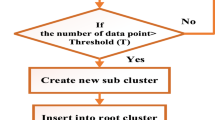Abstract
Due to the effectiveness, simple deployment and low cost, radio frequency identification (RFID) systems are used in a variety of applications to uniquely identify physical objects. The operation of RFID systems often involves a situation in which multiple readers physically located near one another may interfere with one another’s operation. Such reader collision must be minimized to avoid the faulty or miss reads. Specifically, scheduling the colliding RFID readers to reduce the total system transaction time or response time is the challenging problem for large-scale RFID network deployment. Therefore, the aim of this work is to use a successful multi-swarm cooperative optimizer called PS2O to minimize both the reader-to-reader interference and total system transaction time in RFID reader networks. The main idea of PS2O is to extend the single population PSO to the interacting multi-swarm model by constructing hierarchical interaction topology and enhanced dynamical update equations. As the RFID network scheduling model formulated in this work is a discrete problem, a binary version of PS2O algorithm is proposed. With seven discrete benchmark functions, PS2O is proved to have significantly better performance than the original PSO and a binary genetic algorithm. PS2O is then used for solving the real-world RFID network scheduling problem. Numerical results for four test cases with different scales, ranging from 30 to 200 readers, demonstrate the performance of the proposed methodology.
Similar content being viewed by others
References
ERIC N, FRED R. RFID: Technology, applications, and impact on business operations [J]. International Journal of Production Economics, 2008, 112(2): 507–509.
BOTTANI E, RIZZI A. Economical assessment of the impact of RFID technology and EPC system on the fast-moving consumer goods supply chain [J]. International Journal of Production Economics, 2008, 112(2): 548–569.
AMINI M, OTONDO R F, JANZ B D, PITTS M G. Simulation modeling and analysis: A collateral application and exposition of RFID technology [J]. Production and Operations Management, 2007, 16(5): 586–598.
CHEN H N, ZHU Y L, HU K Y. RFID network planning using a multi-swarm optimizer [J]. Journal of Network and Computer Applications, 2011, 34(3): 888–901.
CHEN H N, ZHU Y L, HU K Y, KU T. Multi-colony bacteria foraging optimization with cell-to-cell communication for RFID network planning [J]. Applied Soft Computing, 2010, 10(2): 539–547.
EOM J B, YIM S B, LEE T J. An efficient reader anti-collision algorithm in dense RFID networks with mobile RFID readers [J]. IEEE Transactions on Industrial Electronics, 2009, 56(7): 2326–2336.
CHEN H N, ZHU Y L, HU K Y. Discrete and continuous optimization based on multi-swarm coevolution [J]. Natural Computing, 2010, 9(3): 659–682.
MÜELLER S, MARCHETTO J, AIRAGHI S, KOUMOUTSAKOS P. Optimization based on bacterial chemotaxis [J]. IEEE Transactions on Evolutionary Computation, 2002, 6(1): 16–29.
DORIGO M, MANIEZZO V, COLORNI A. The ant system: Optimization by a colony of cooperating agents [J]. IEEE Transactions on Systems, Man, and Cybernetics Part B: Cybernetics, 1996, 26(1): 29–41.
CLERC M, KENNEDY J. The particle swarm-explosion, stability, and convergence in a multidimensional complex space [J]. IEEE Transactions on Evolutionary Computation, 2002, 6(1): 58–73.
CHEN H N, ZHU Y L. Optimization based on symbiotic multi-species coevolution [J]. Applied Mathematics and Computation, 2008, 205(1): 47–60.
KENNEDY J, EBERHART R C. A discrete binary version of the particle swarm algorithm [C]// Proceeding of the World Multiconference on Systemics, Cybernetics and Informatics. Orlando, USA: IEEE Press, 1997: 4104–4109.
KENNEDY J, MENDES R. Population structure and particle swarm performance [C]// Proceeding of the Congress on Evolutionary Computation. Honolulu, HI: IEEE Press, 2002: 1671–1676.
CLERC M. Discrete particle swarm optimization, illustrated by the traveling salesman problem [M]. Berlin: Springer-Verlag, 2004: 56–88.
SUMATHI S, HAMSAPRIYA T, SUREKHA P. Evolutionary intelligence: An introduction to theory and applications with Matlab [M]. Berlin: Springer-Verlag, 2008: 90–108.
Author information
Authors and Affiliations
Corresponding author
Additional information
Foundation item: Projects(61105067, 61174164) supported by the National Natural Science Foundation of China; Projects(012BAF10B11, 2012BAF10B06) supported by the National Key Technologies R&D Program of China; Project(F11-264-1-08) supported by the Shenyang Science and Technology Project, China; Project(2011BY100383) supported by the Cooperation Project of Foshan and Chinese Academy of Sciences
Rights and permissions
About this article
Cite this article
Chen, Hn., Zhu, Yl. A discrete multi-swarm optimizer for radio frequency identification network scheduling. J. Cent. South Univ. 21, 199–212 (2014). https://doi.org/10.1007/s11771-014-1931-6
Received:
Accepted:
Published:
Issue Date:
DOI: https://doi.org/10.1007/s11771-014-1931-6




